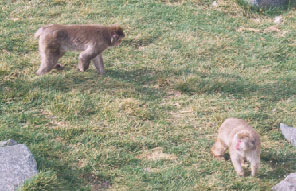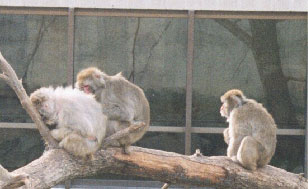This species has cheek pouches to carry food in while it forages. The average body mass for an adult male Japanese macaque is around 12 kilograms, and for the females it is around 10 kilograms. The pelage varies in color from brown to white. There is no hair on the face and it becomes red during adulthood. This species has a relatively short tail.
RANGE:
The Japanese macaque is found in the country of Japan. They range from the subtropical lowlands to the subalpine regions of Japan.





